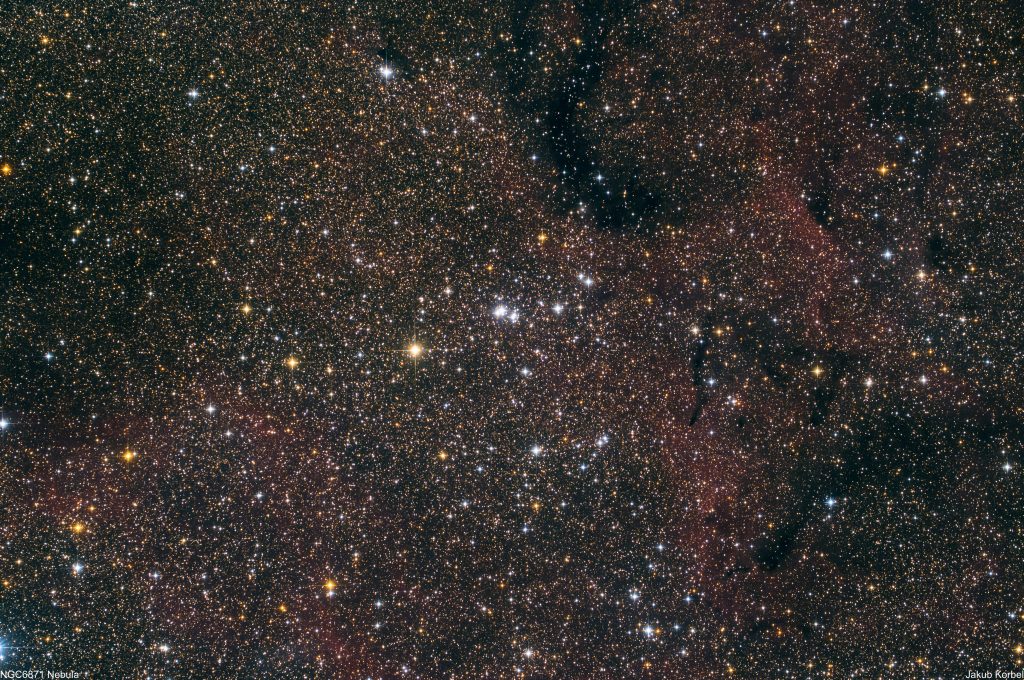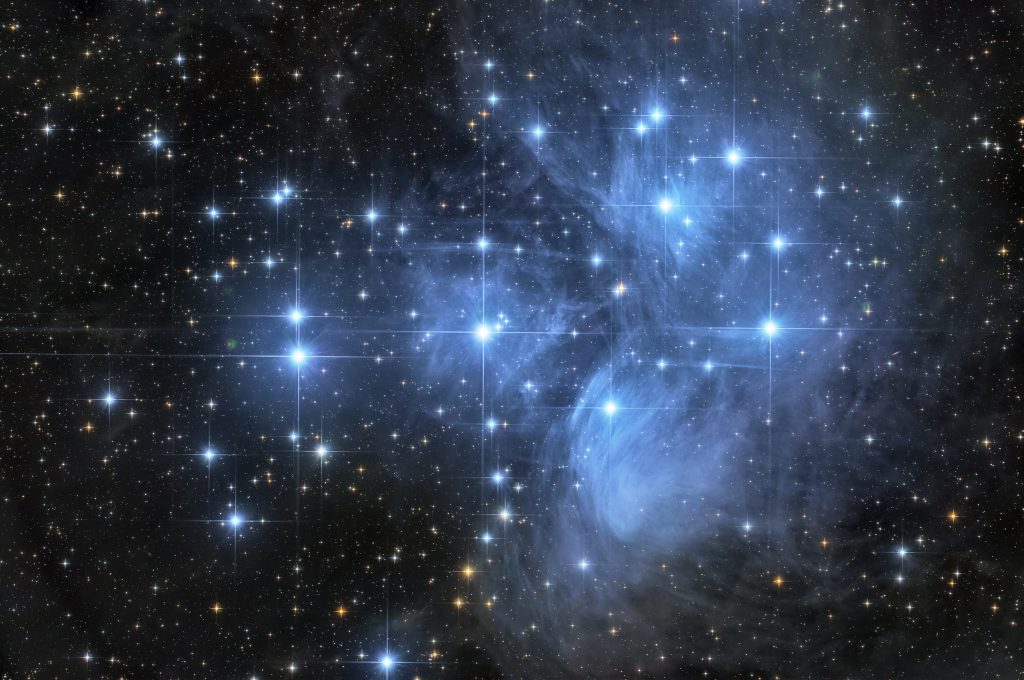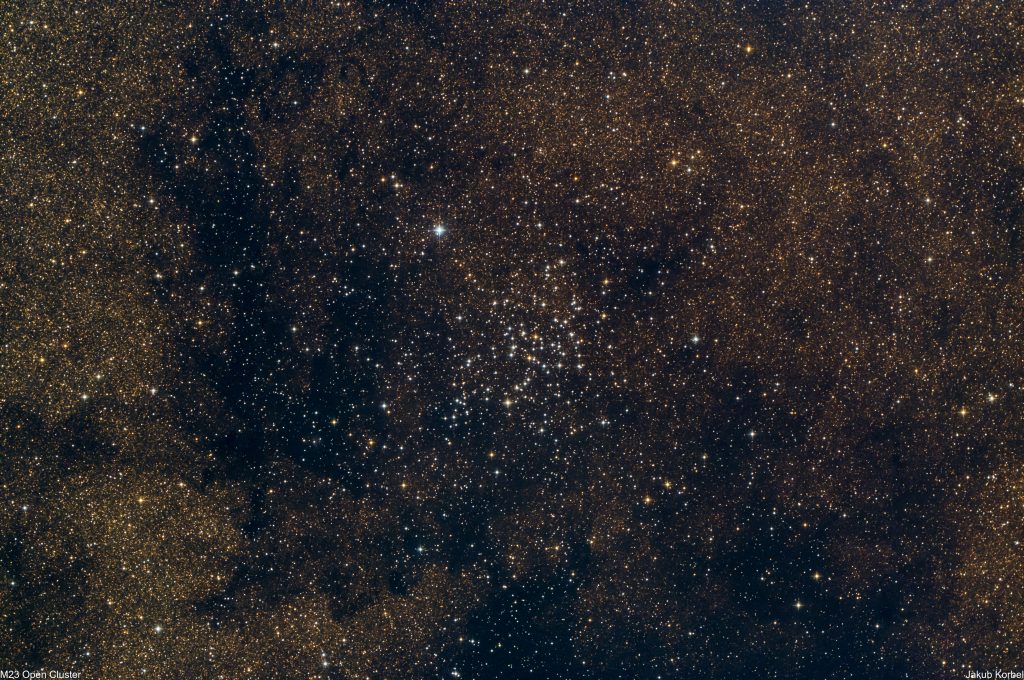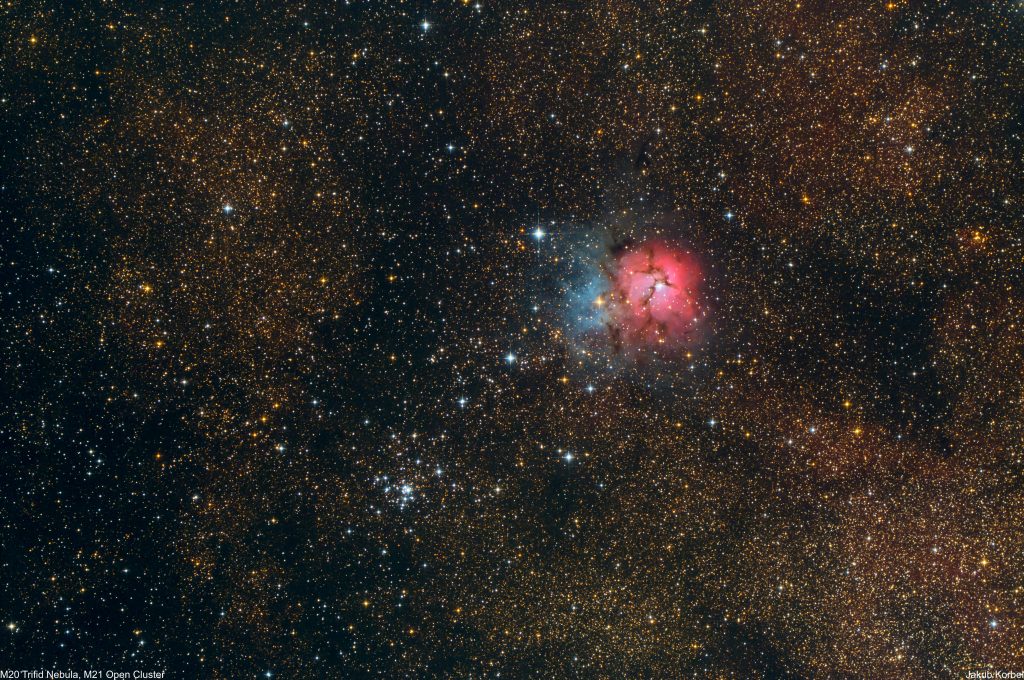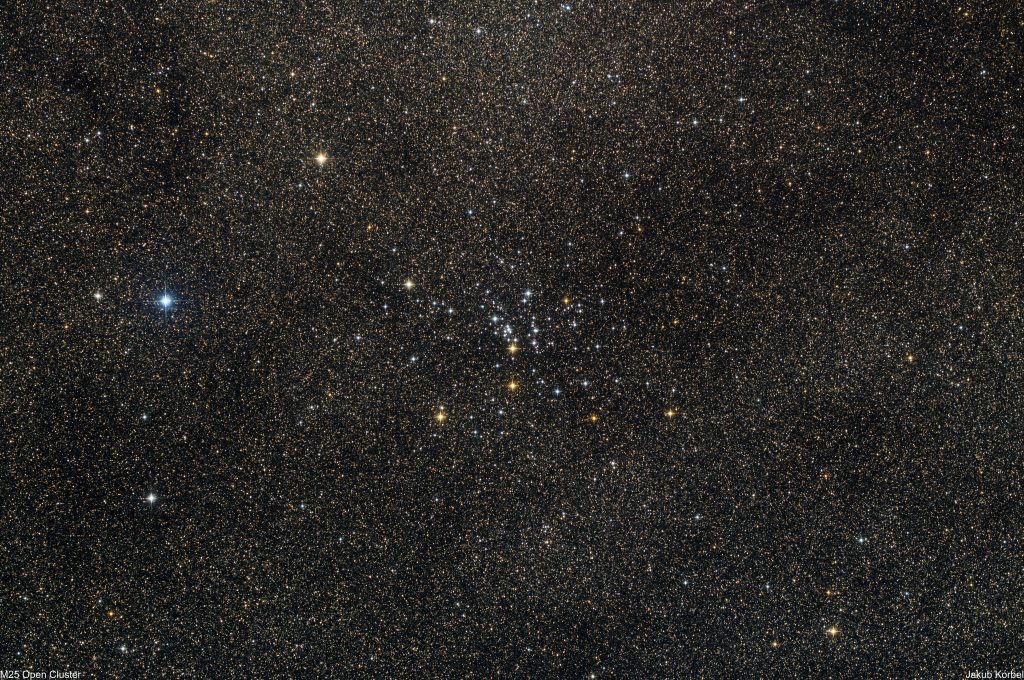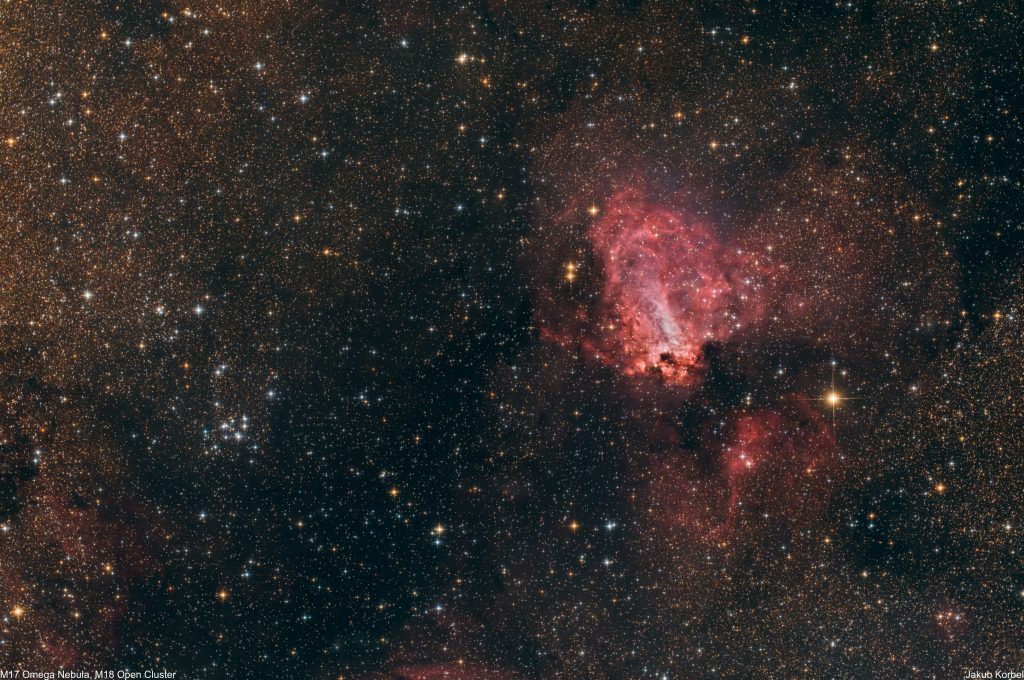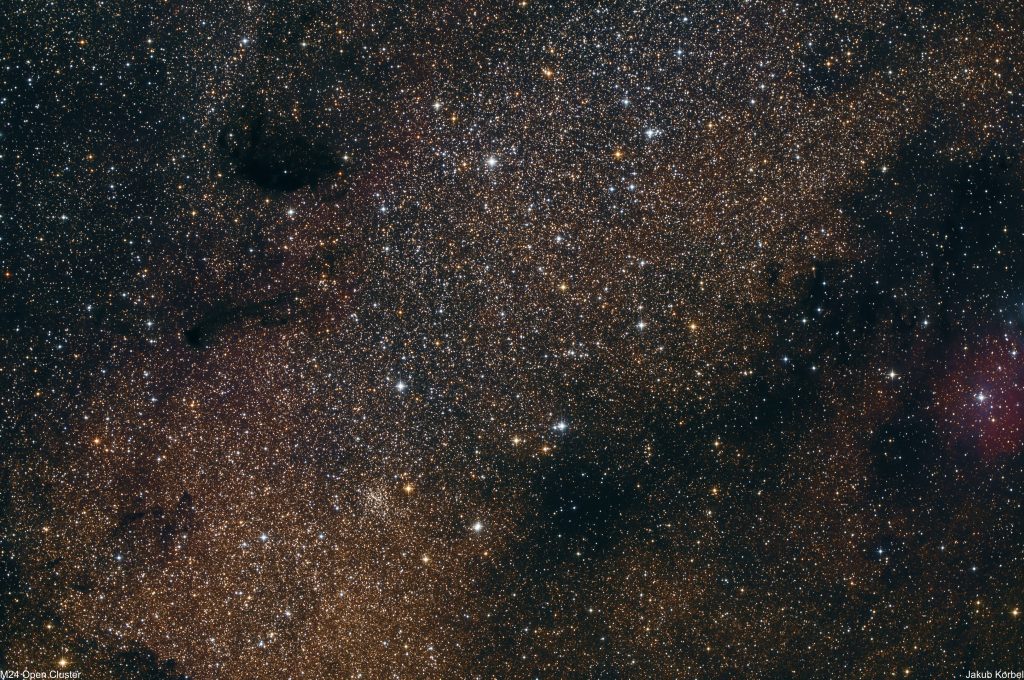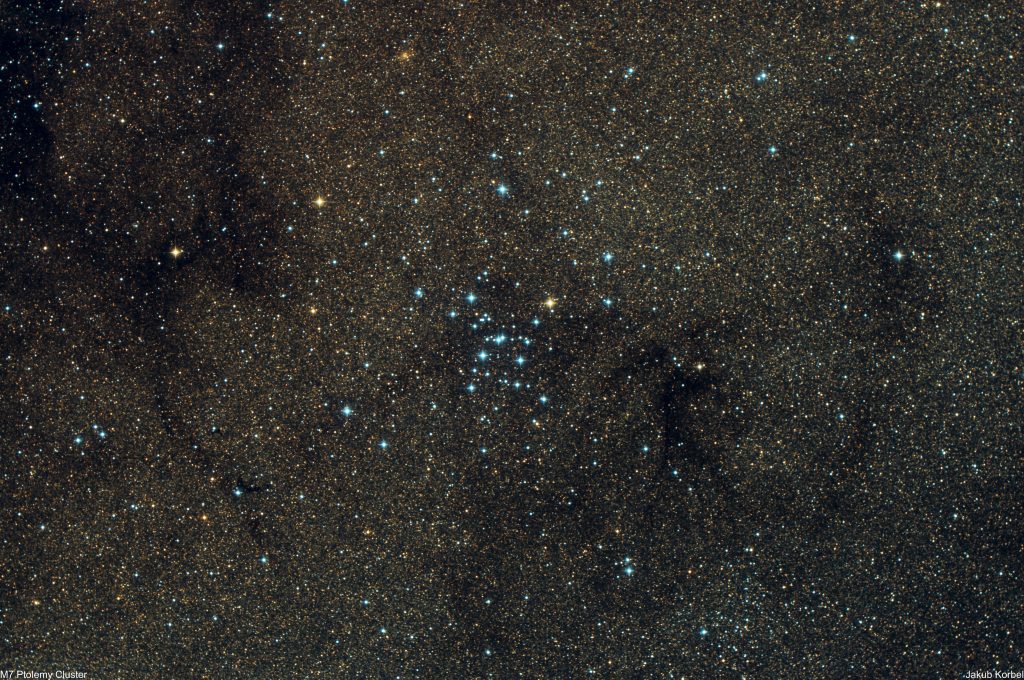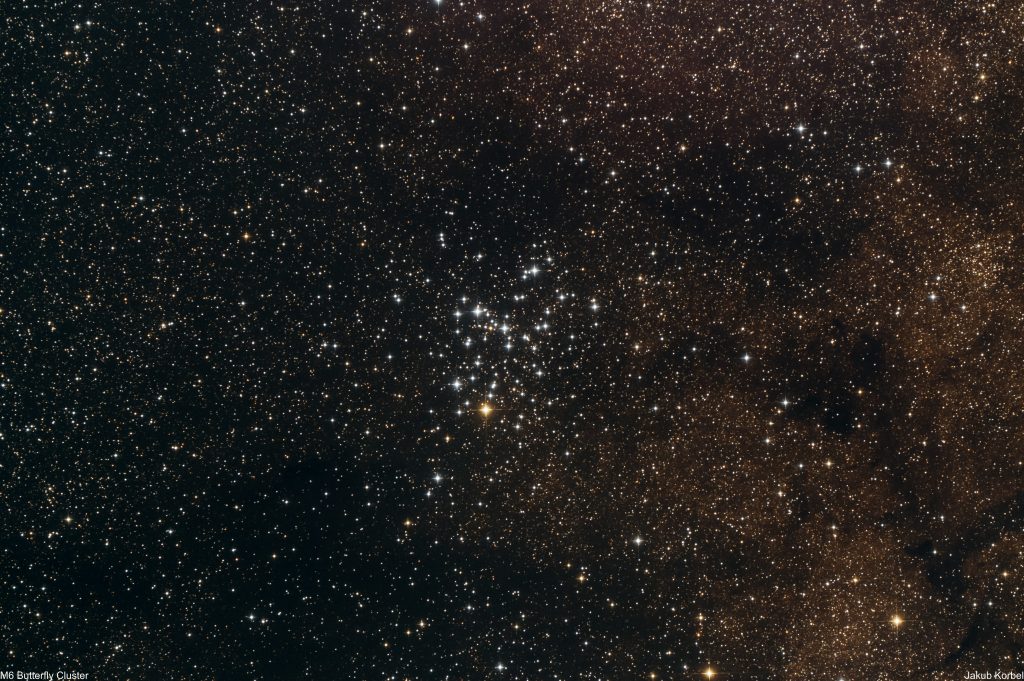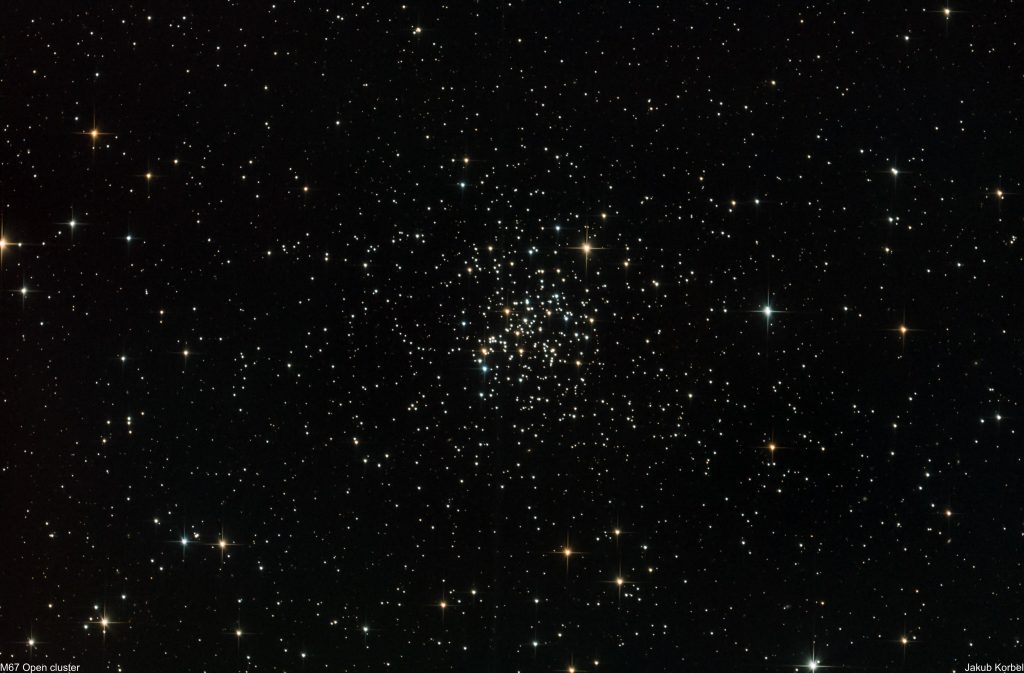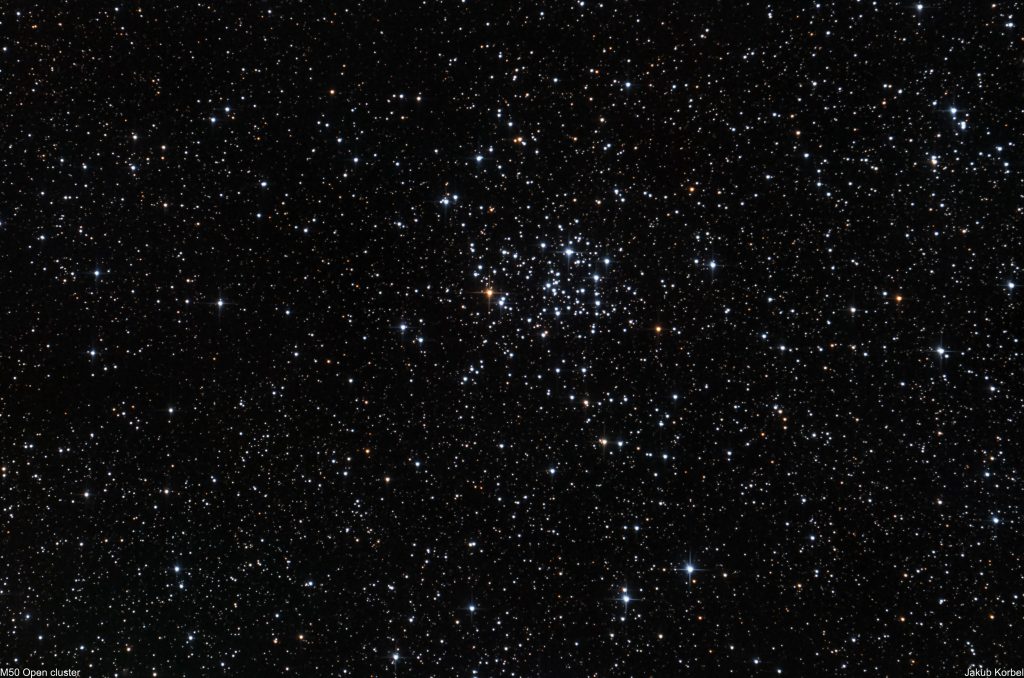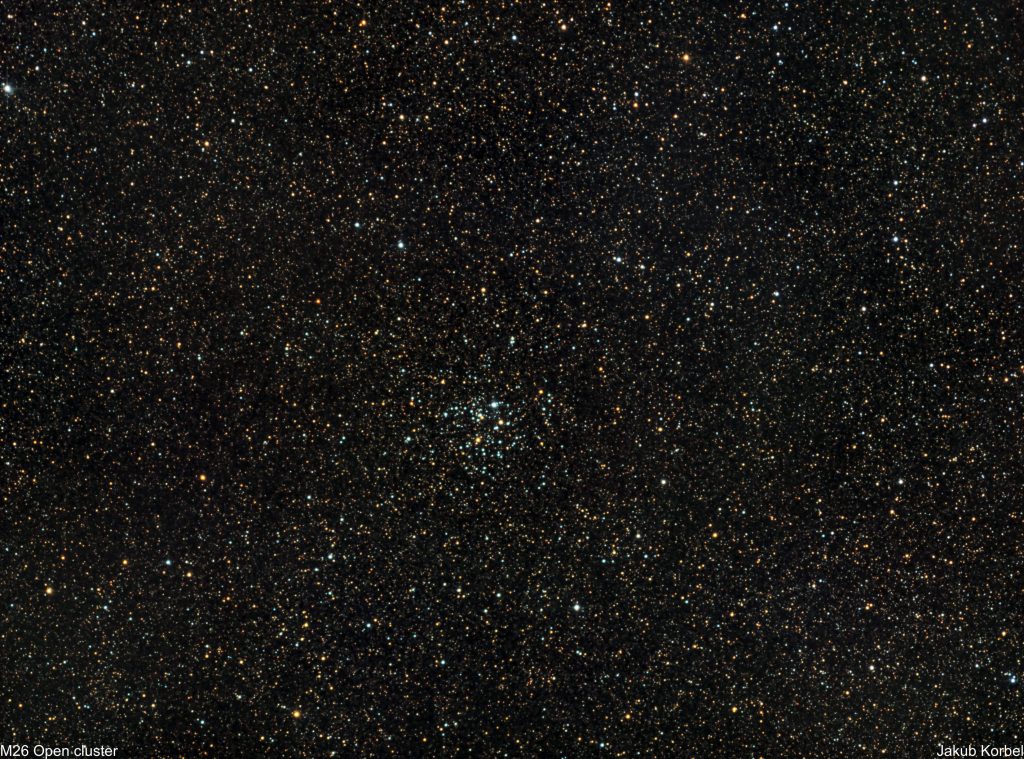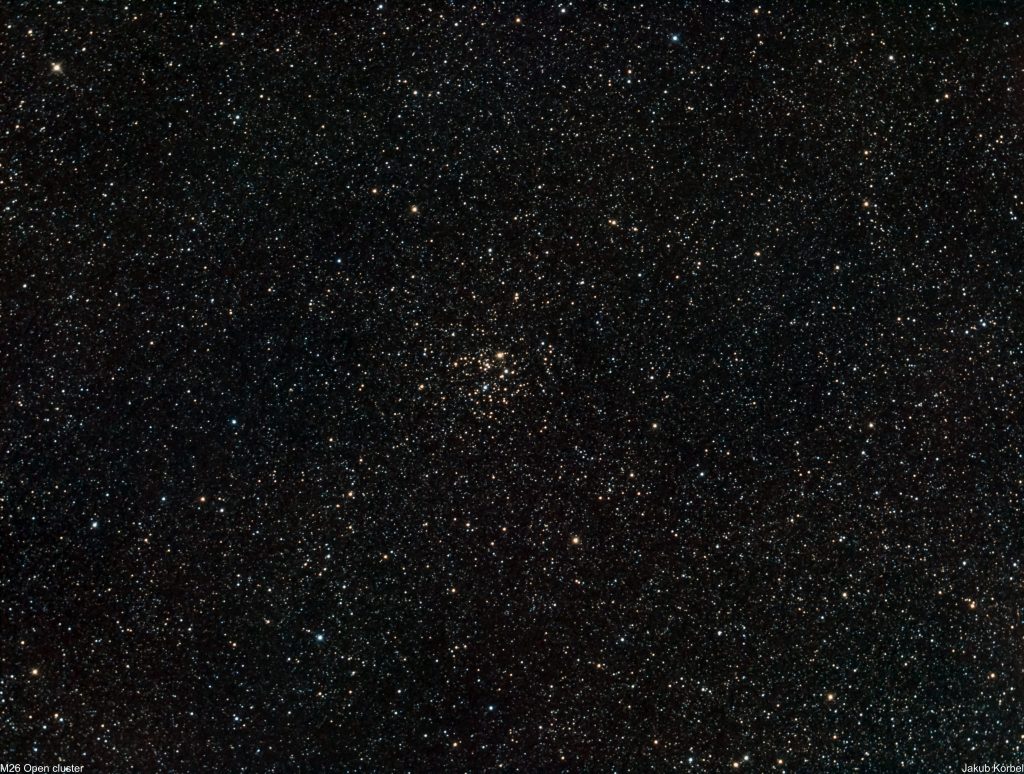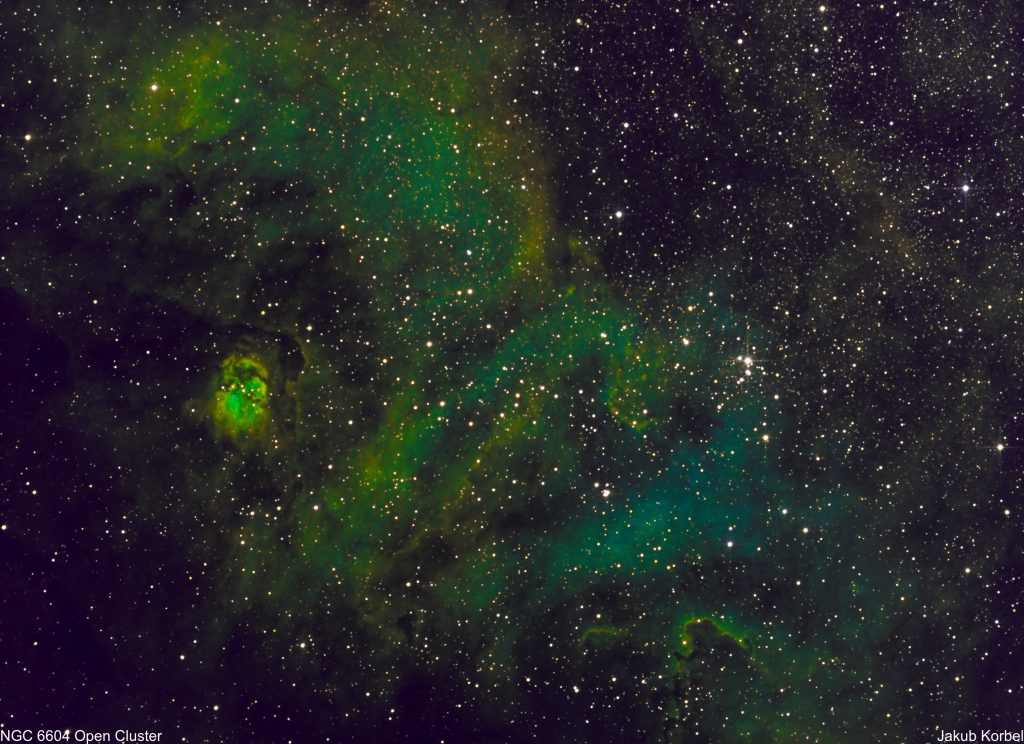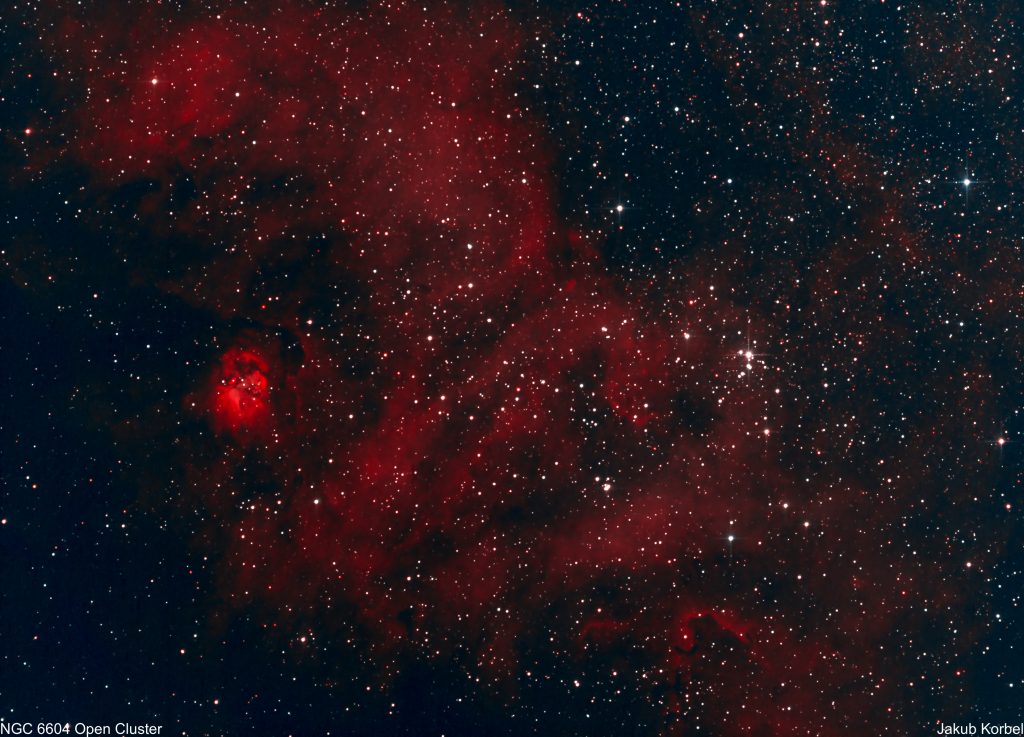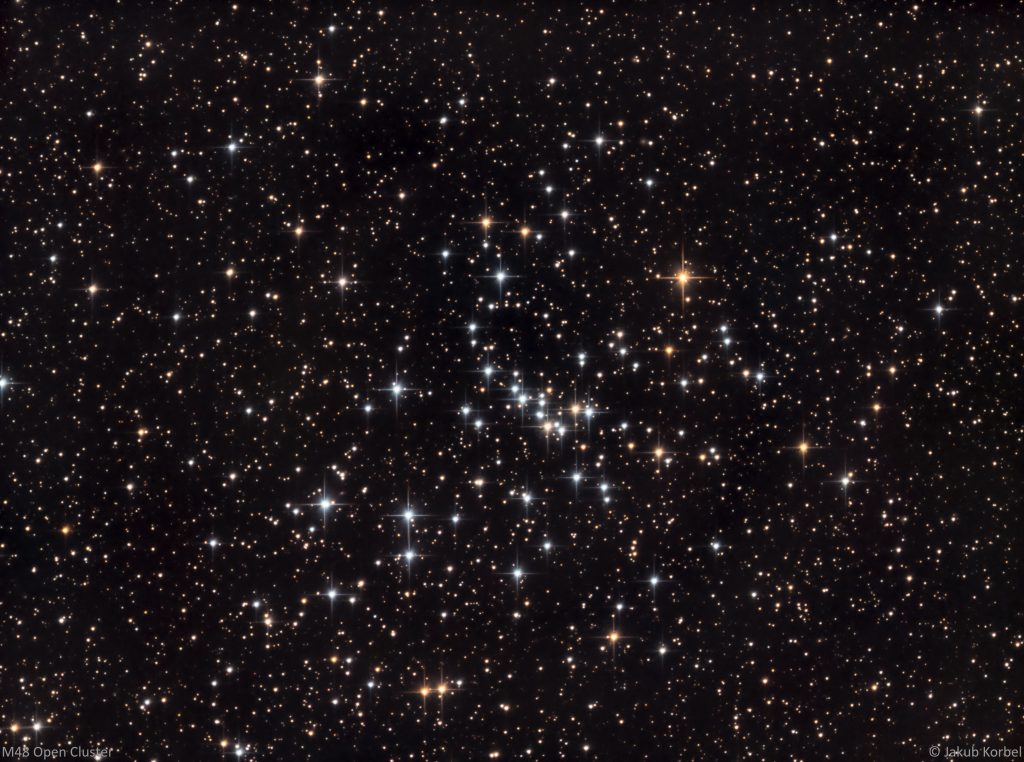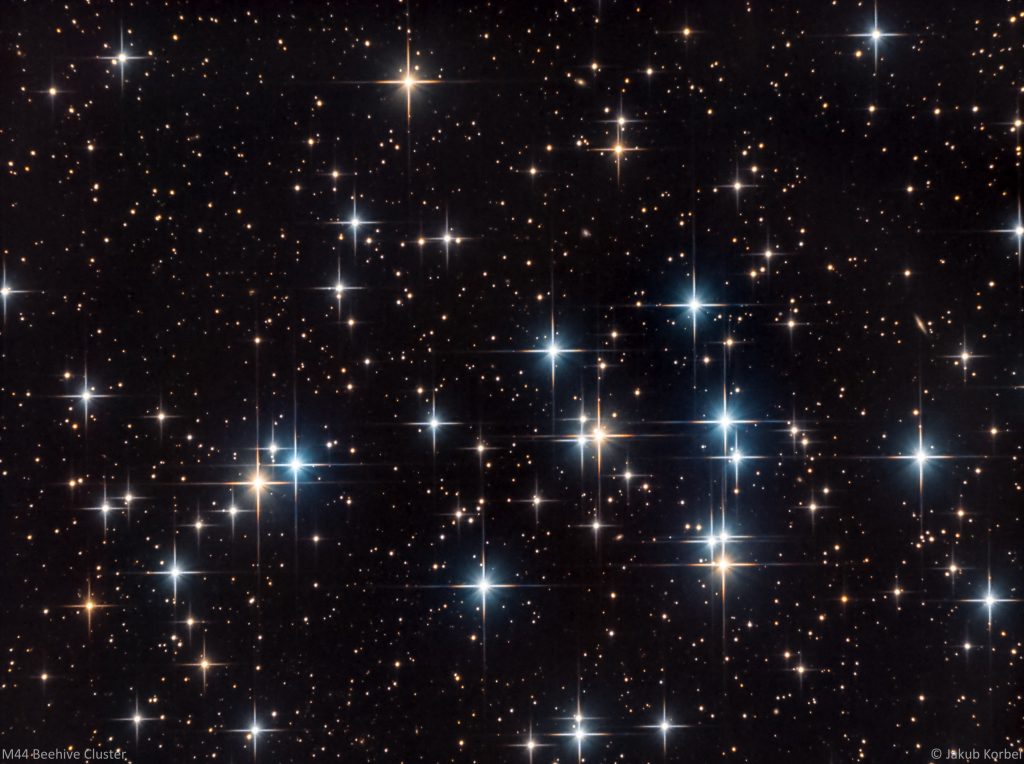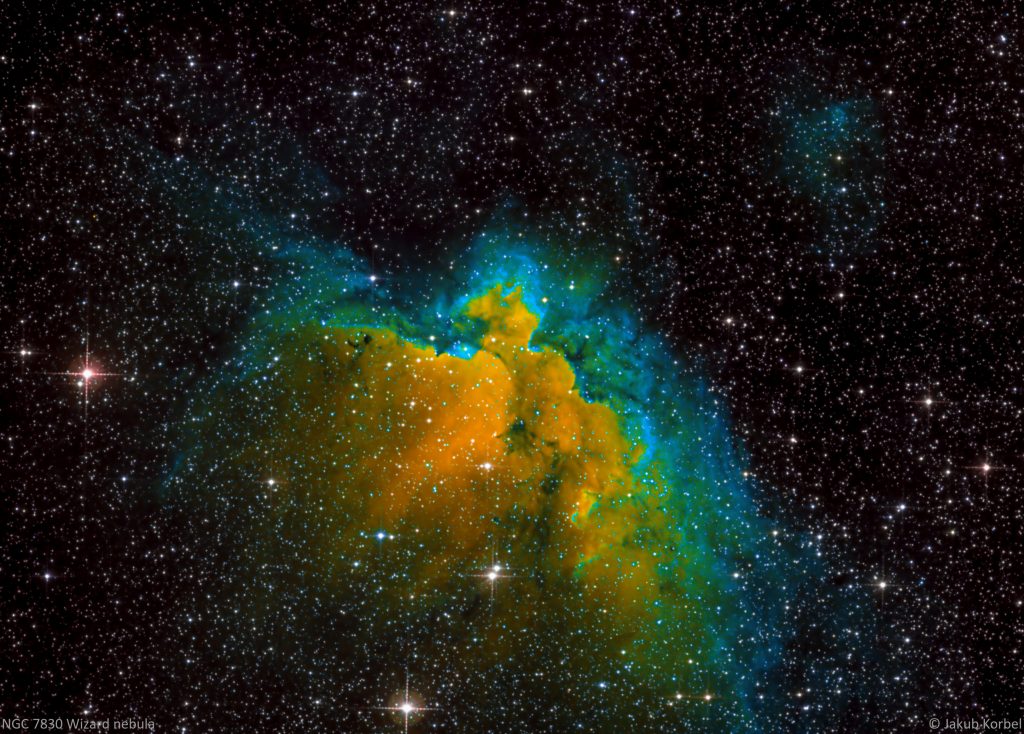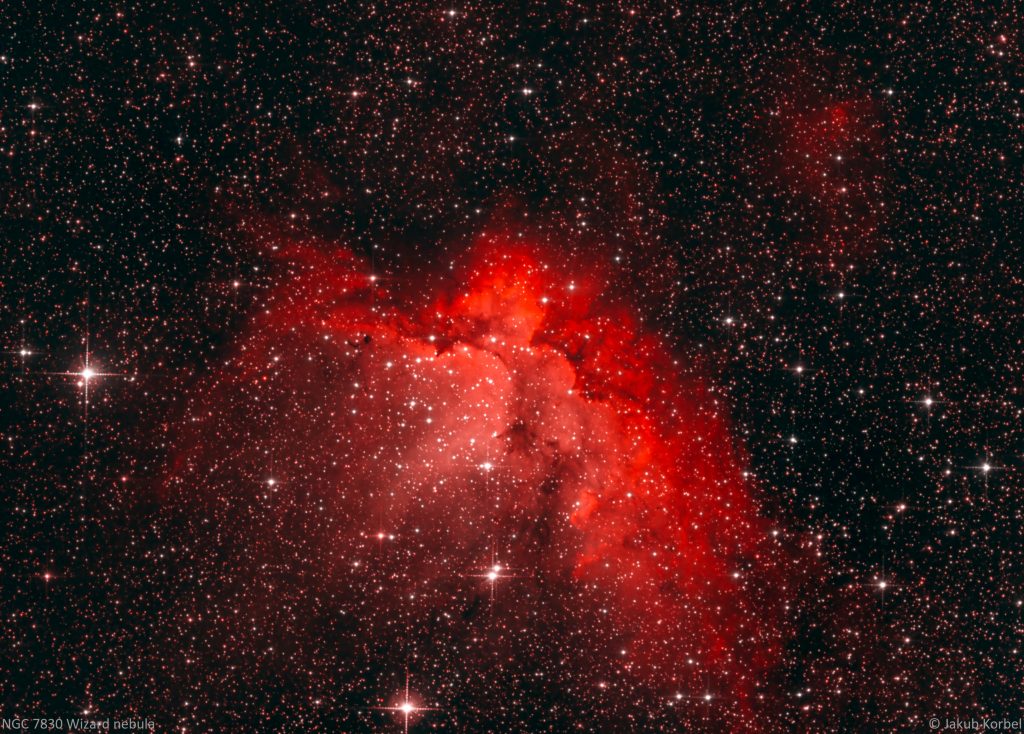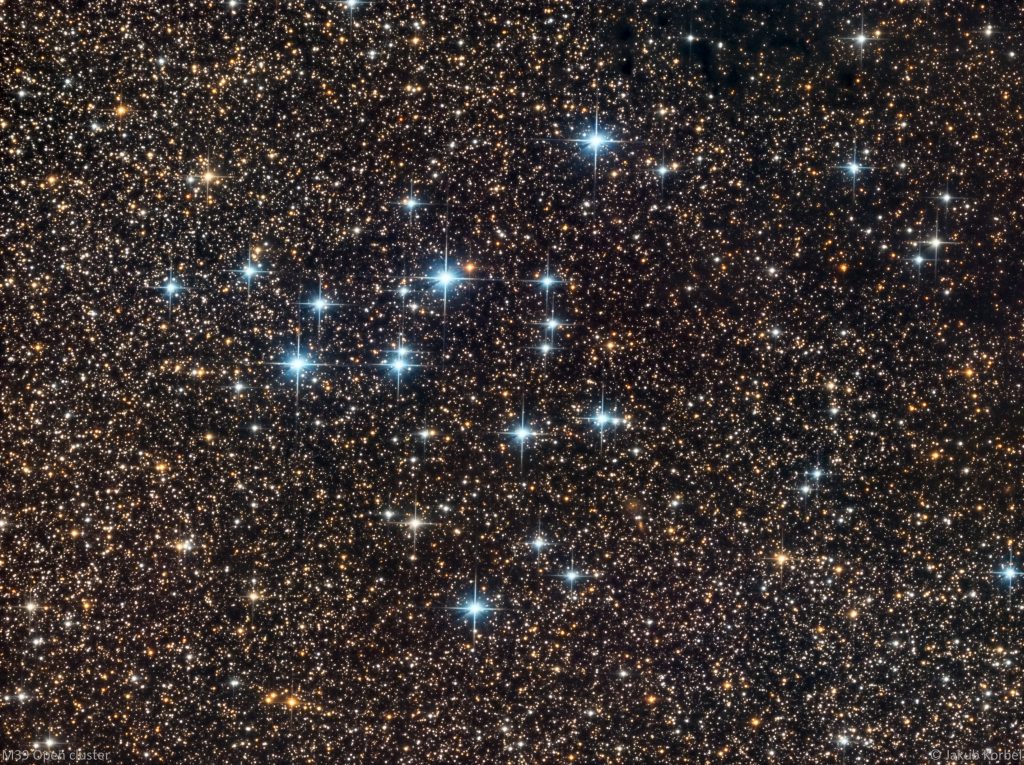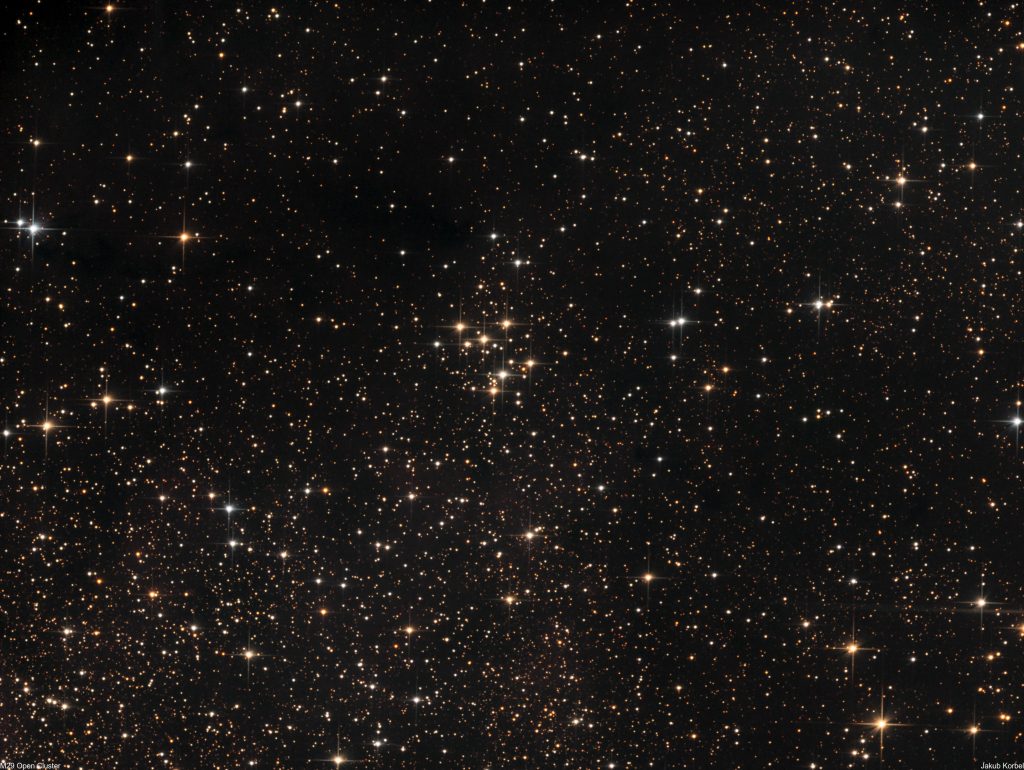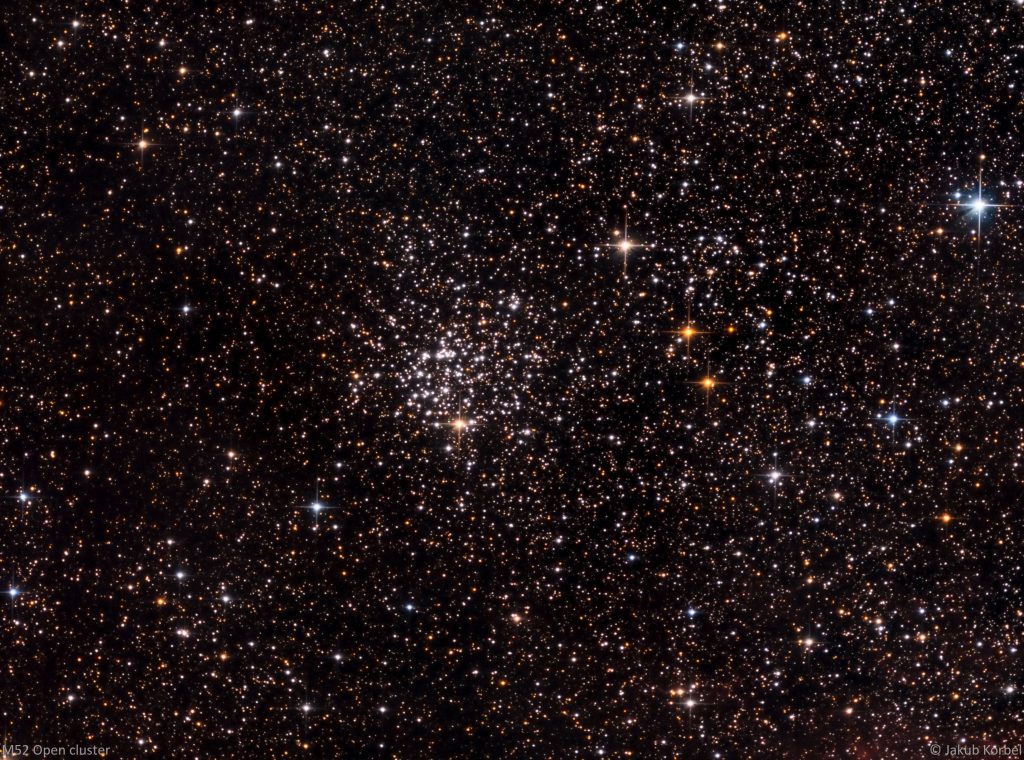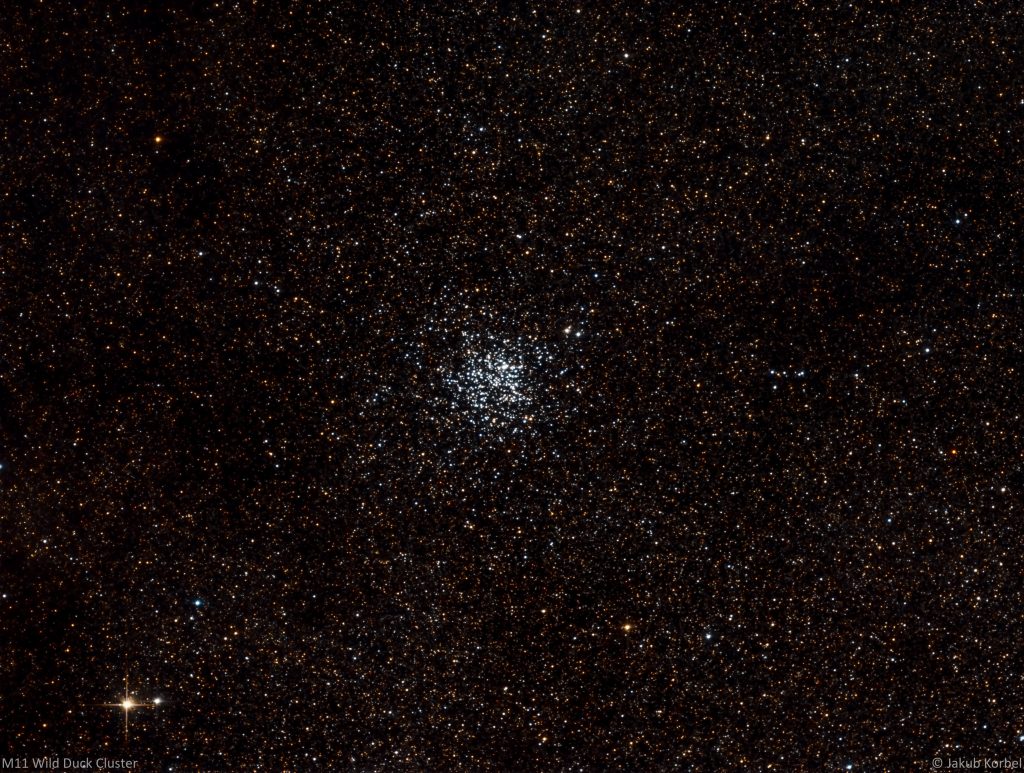NGC6871 is an open cluster located in Cygnus, has less than 50 stars and it is 5135 light-years from Earth. Constellation Cygnus is visually located on the galactic disk of the Milky Way; therefore there are many stars in the background. Particularly interesting are the dark nebulae, surrounding the cluster.
Picture was taken under dark skies of Milos Island and in total, it’s an integration of on 63 minutes.
Technical details:
| Telescope | Newton 150/600 mm |
| Aperture | 150 mm |
| Focal length | 660 mm |
| Mount | iOptron CEM25P |
| Autoguiding | QHYCCD miniGuideScope 130 mm f/4.3, ZWO 174 MM |
| Camera | ZWO 071 Pro @-10C |
| Corrector | Explore Scientific HR coma corrector |
| Filters | Astronomik L-1 - UV IR Block Filter |
| Exposure | 21x180s, Gain 134, bin 1x1, |
| Date | 2018-09-15 |

